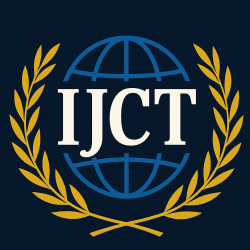
Computer Science Journal Reviewer – BOYE Aziboledia Frederick | IJCT

Table of Contents
ToggleBOYE, Aziboledia Frederick
Reviewer — Industrial IoT, AI/ML, Cybersecurity & Expert Systems (PII hidden)
Profile Overview
About the Reviewer
BOYE, Aziboledia Frederick is a Computer Science Journal Reviewer with deep domain experience across Industrial Internet of Things (IIoT), cybersecurity analytics, machine learning, fuzzy expert systems, and instrumentation/control engineering. He contributes to scholarly quality by providing structured, constructive reviews that help authors improve clarity, methodological rigor, and reproducibility—while protecting the integrity of the scientific record. To maintain privacy and comply with journal policies, contact details and exact location are not displayed on this page.
Academic & Professional Background
- Advanced study and research engagement in Computer Science (focus: AI/ML, IIoT security, expert systems).
- Hands-on engineering experience in instrumentation & control within large process-industry environments.
- Active participation in academic conferences and invited lectures on AI safety and energy-sector cybersecurity.
- Reviewer activity with multiple computer science and engineering venues.
Expertise Snapshot
Review Focus & Scope
As a Computer Science Journal Reviewer, the primary focus is research that advances reliable, secure, and explainable computational systems—especially where industrial IoT meets AI/ML. Submissions that present credible experimental design, robust baselines, ablation studies, realistic datasets, and actionable engineering insights receive priority consideration.
Preferred Topic Areas
- Industrial IoT & Cyber-Physical Systems: anomaly detection, sensor integrity, secure protocols, and edge intelligence.
- Cybersecurity Analytics: supervised/unsupervised detection, graph-based alerts triage, adversarial robustness, and model governance.
- AI/ML Systems: model compression, latency-aware inference, transfer learning, and domain adaptation for OT networks.
- Fuzzy Logic & Expert Systems: interpretable rule-based reasoning for safety-critical decisions.
- Evaluation & Reproducibility: dataset hygiene, leakage checks, reproducible pipelines, and transparent reporting.
Out-of-Scope (Typically Rejected)
- Papers without a novel contribution, missing baselines, or lacking adequate comparisons.
- Purely theoretical work with no plausible path to implementation or validation.
- Results reported without confidence intervals, effect sizes, or robust error analysis.
Submission Guidance for Authors
To streamline review and maximize acceptance odds, align your manuscript with the following structure. The recommendations below reflect best practice for reproducible research in applied AI and security domains.
Manuscript Structure Checklist
Writing Quality & Clarity
“Readable science is usable science.” Favor short sentences, descriptive figure captions, and tables that answer a real question.
Common Fixes Before Submission
- Remove ambiguous claims; back every assertion with data or a citation.
- Standardize terminology (e.g., IDS vs. IPS); define acronyms on first use.
- Ensure figures are legible on mobile; minimum 11–12 pt labels.
- Include a threat model and deployment diagram for security papers.
Evaluation Criteria & Scoring
Review outcomes depend on novelty, methodological rigor, significance, clarity, and reproducibility. Each dimension is scored and justified with actionable feedback:
- Originality: Does the work offer a new idea, method, or evidence?
- Technical Depth: Are design choices justified? Are baselines fair?
- Practical Relevance: Will findings transfer to real IIoT/OT settings?
- Clarity: Is the paper well-structured, with readable figures/tables?
- Reproducibility: Are code, parameters, and splits reported?
- Ethics & Safety: Data consent, privacy, and risk controls.
Ethics, Integrity & Conflicts
The reviewer adheres to IJCT’s ethical standards. Manuscripts are evaluated impartially, with confidentiality maintained throughout. Any potential conflict of interest is disclosed to the editorial office, and the reviewer recuses when necessary.
- Confidentiality: All material remains private and is used solely for evaluation.
- Impartiality: Submissions are judged on merit regardless of affiliation or geography.
- No PII: This page hides personal contact information; communication occurs via editorial channels.
Recent Reviewing Highlights (Representative)
- Industrial IoT intrusion detection using CNN + fuzzy inference with ablation on noise tolerance and class imbalance.
- Energy-sector cybersecurity performance analysis with latency-aware edge deployment and cost/perf trade-offs.
- Expert-system guidance for predictive maintenance on process equipment with interpretable rules.
These examples illustrate scope only; specific manuscripts remain confidential.
Explore IJCT Resources
Selected, relevant links to help authors prepare strong submissions:
Author FAQs
What makes a submission stand out?
Clear problem framing, credible baselines, and a reproducible pipeline. Include a deployment diagram and cost/latency analysis if your work targets OT/IIoT.
How do I show real-world relevance?
Map metrics to operational realities: false-positive load, triage time, update cadence, and safety constraints. Provide at least one realistic use case.
How are privacy and conflicts handled?
All communications run through IJCT’s editorial team. PII is not published on this page. Conflicts are disclosed and managed per policy.
Related Posts:











